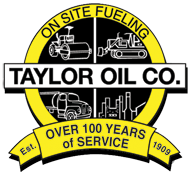3 Money-Saving Fuel Industry Tips – There are a lot of common money-wasting practices in the fuel industry that can be prevented or minimized with a few tips, found here:
1. Meter Loss
Fuel is a product most people never see. After all, this liquid is delivered from a truck via a hose to another vehicle after being converted from cubic inches to dollars and gallons. You can’t see how much is coming out, and aside from a fuel gage that shows Empty or Full, there’s no exact confirmation as to numeric values associated with the fill up you just received.
Consider this when it comes to understanding how the metering/dispensing process works.
- Fuel is dispensed and metered in cubic inches, then it is converted to gallons and dollars
- 231 cubic inches are found in one gallon of liquid (1,155 cubic inches in five gallons of liquid)
- Federal guidelines say meters/totalizers to be “off” by as much as + or – six cubic inches per five gallons of product dispensed
- The amount of slack allowed in a meter is ½%: o six cu. in. / 1,155 cu. in. = 0.0052 o 0.0052 x 100 = 0.52% or ½%
The government guidelines want to ensure accuracy but do allow for an acceptable margin of error designed to accommodate “meter drift.” But in today’s economy, any variance greater than zero will have a big impact on financial penalty.
If you figure $2 per gallon, a one cubic inch loss translates to a $649 per month loss for a 150,000-gallon per month gas station.
2. Slow-Pumping Dispensers
There are many variables that influence how quickly a particular dispenser is flowing. It may be a pump issue, it may be a nozzle issue, or it could be a filter issue. The problem here is that slow flow dispensers annoy customers. A customer may get so frustrated that they never visit the gas station again. By the time the store clerk is made aware of the issue from an irate customer, the pump has likely been slow for some time.
Flow rates may be monitored and forecasted weeks in advance in order to figure out the most cost-efficient time to do a filter change. Not all filters need to be changed at once. Some dispensers are not used as often as others, and may still have many more months of useful time left on the filter.
3. Down Dispensers
The biggest problem is when a dispenser machine goes down. This is largely inevitable, but it’s one of the toughest pieces of information to acquire for the technician in charge of fixing the issue.
Many customers will see an out-of-order cover on a nozzle, and not stop there, even to park and go into the store to buy something. So, the gas station loses out on even more business.
However, there are monitoring solutions available that can indicate when a dispenser is down so that it can be fixed quickly and the retailer can make money again.
By addressing these three core money-saving fuel tips, a gas station or other retailer can save cash, time and hassle.
Contact Taylor Oil
For more money-saving fuel tips or to book your onsite fueling services, contact us today!


